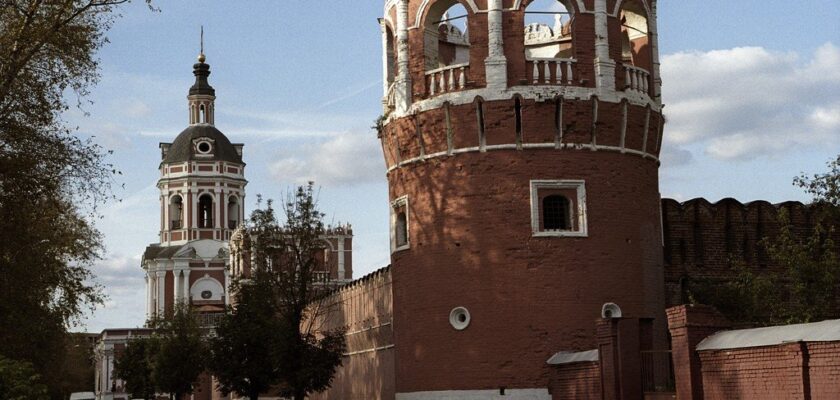Donskoy Monastery
Donskoy Monastery is a stavropigial, i.e. subordinate directly to the patriarch or the Holy Synod, male monastery, which is located almost in the very center of Moscow. The domes of the cathedrals at the beginning of the last century rose above the low buildings around and were visible from afar. Now the cloister is surrounded by modern high-rise buildings. However, the ancient buildings, mossy monuments on the graves of the cemetery and century-old linden alley immerse visitors to the Donskoy Monastery in the atmosphere of distant times.
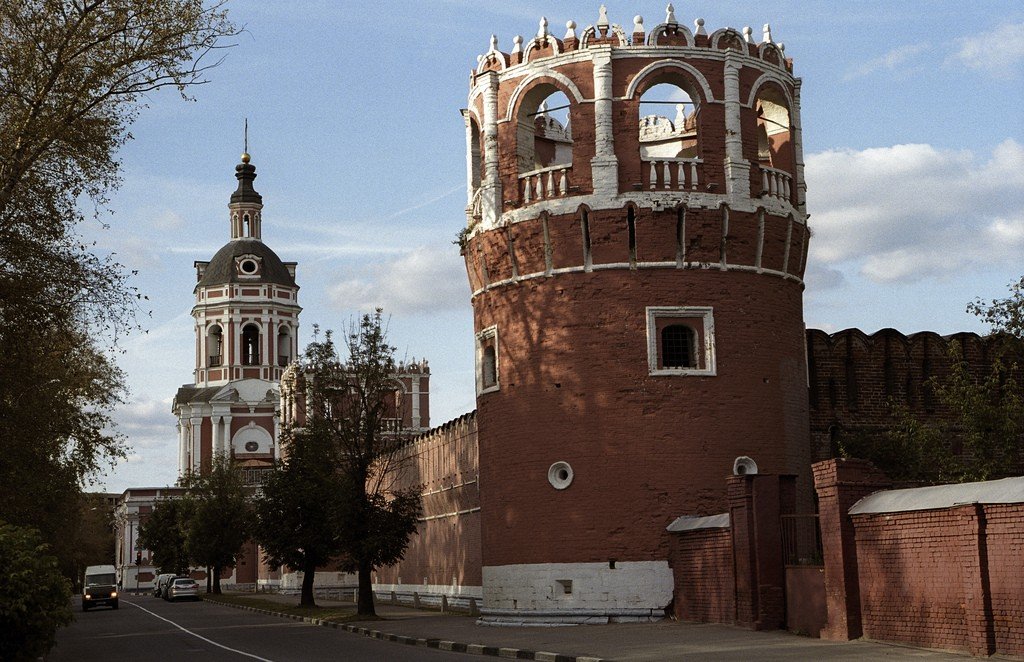
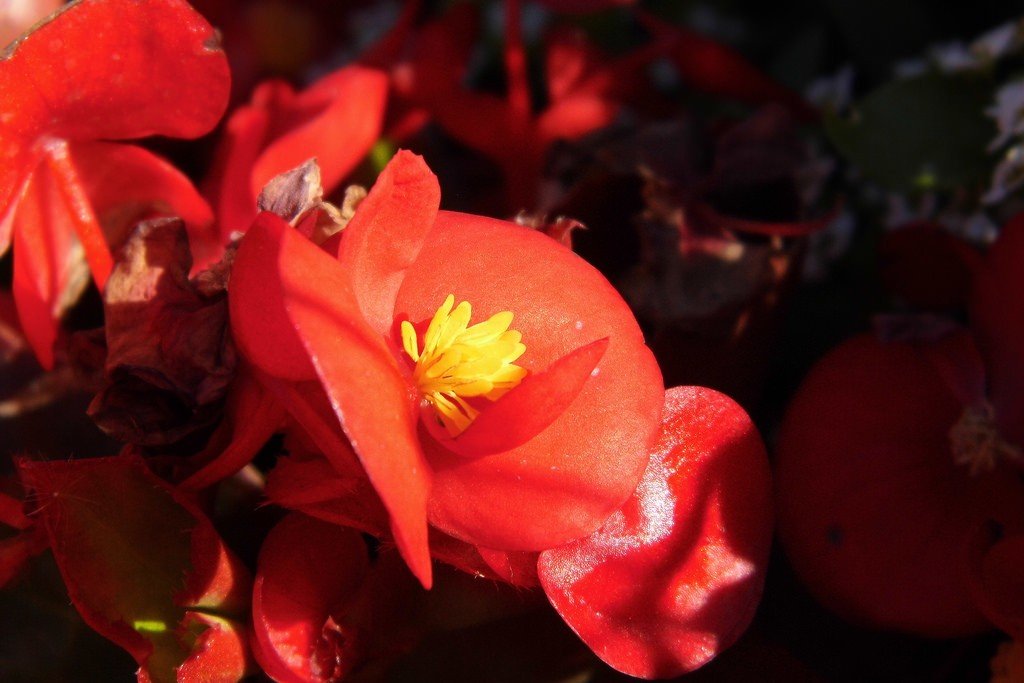
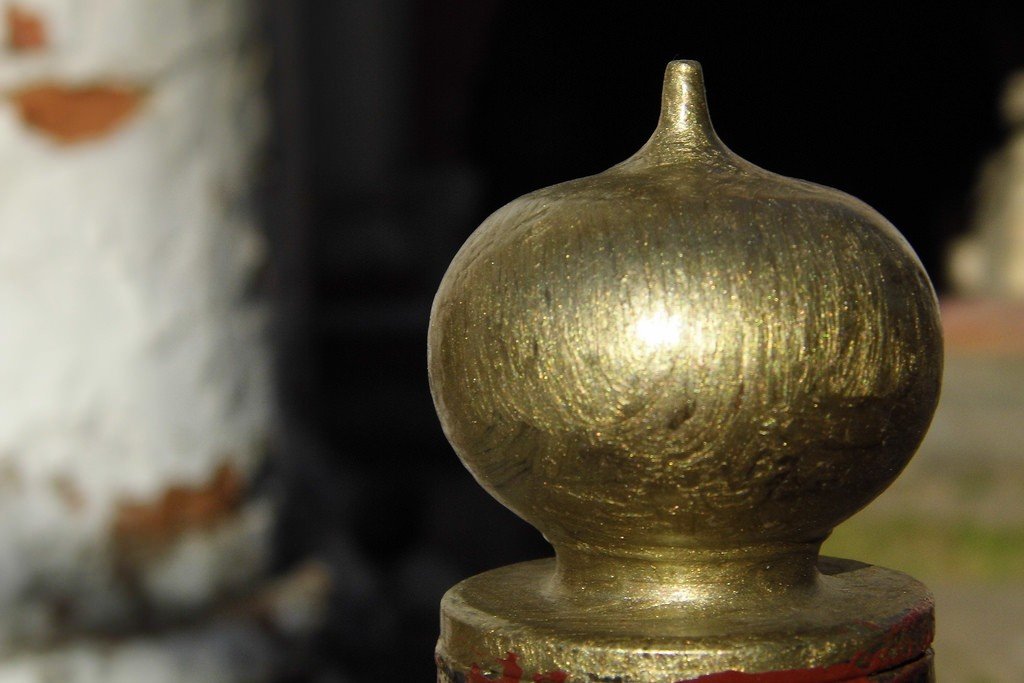
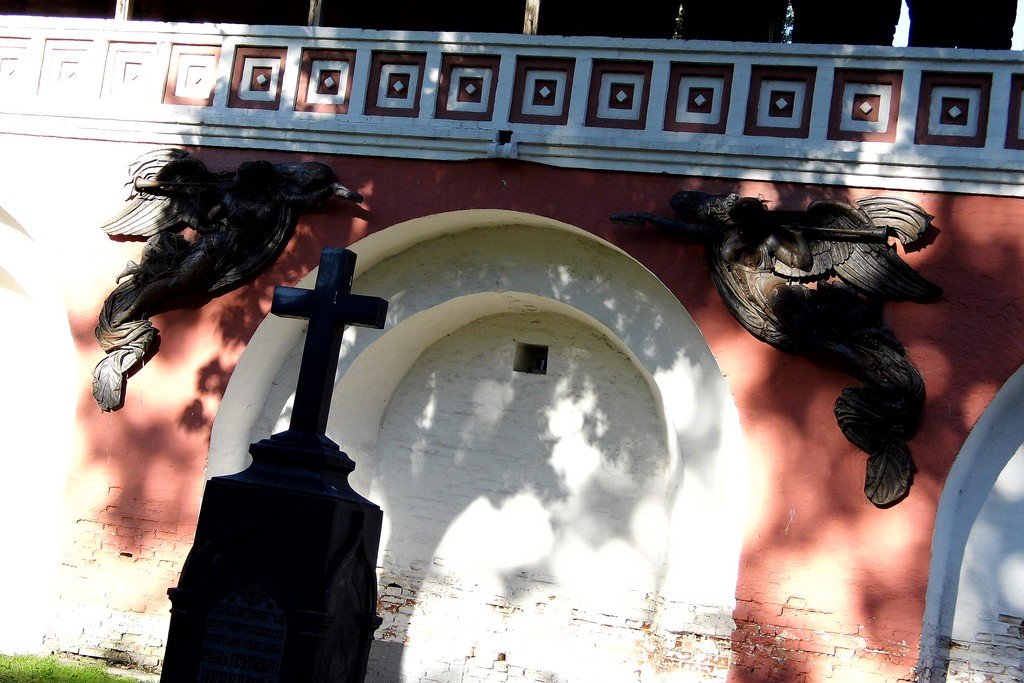
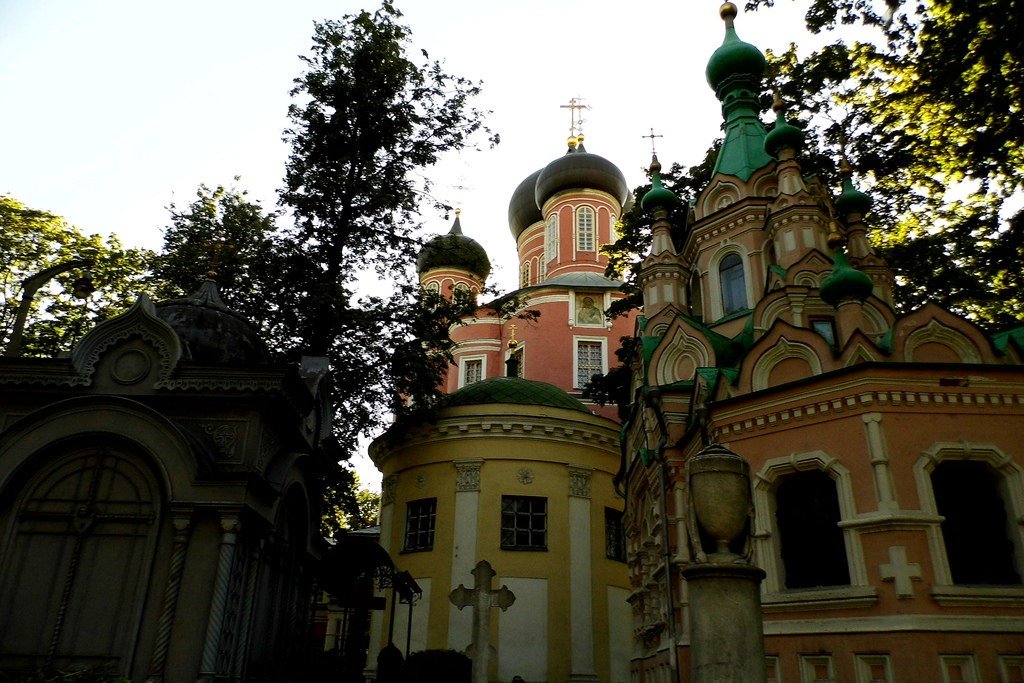
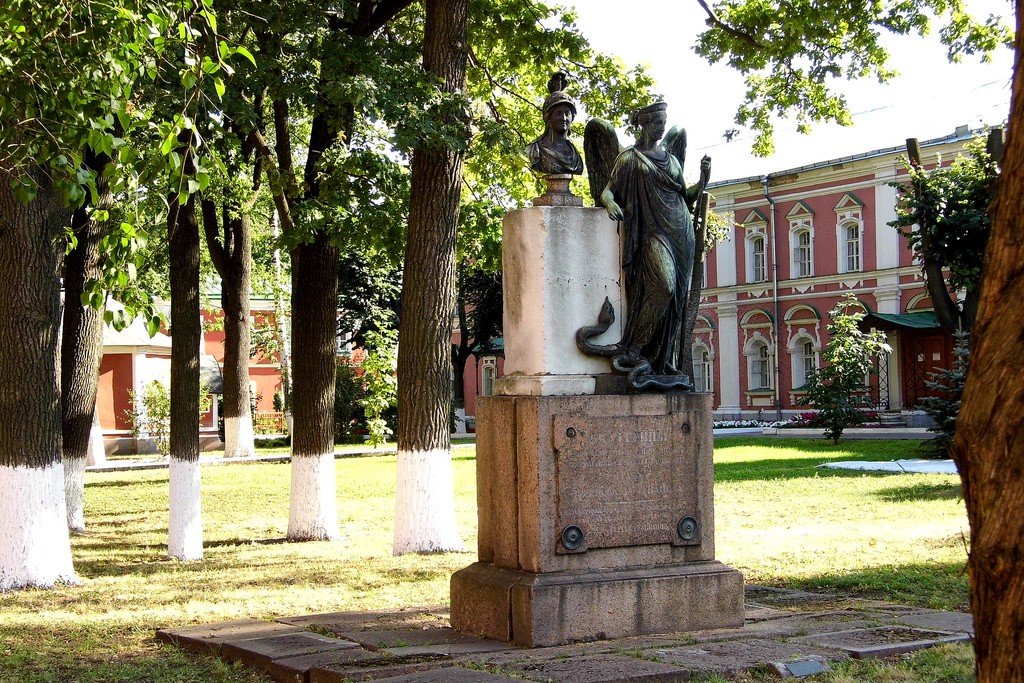
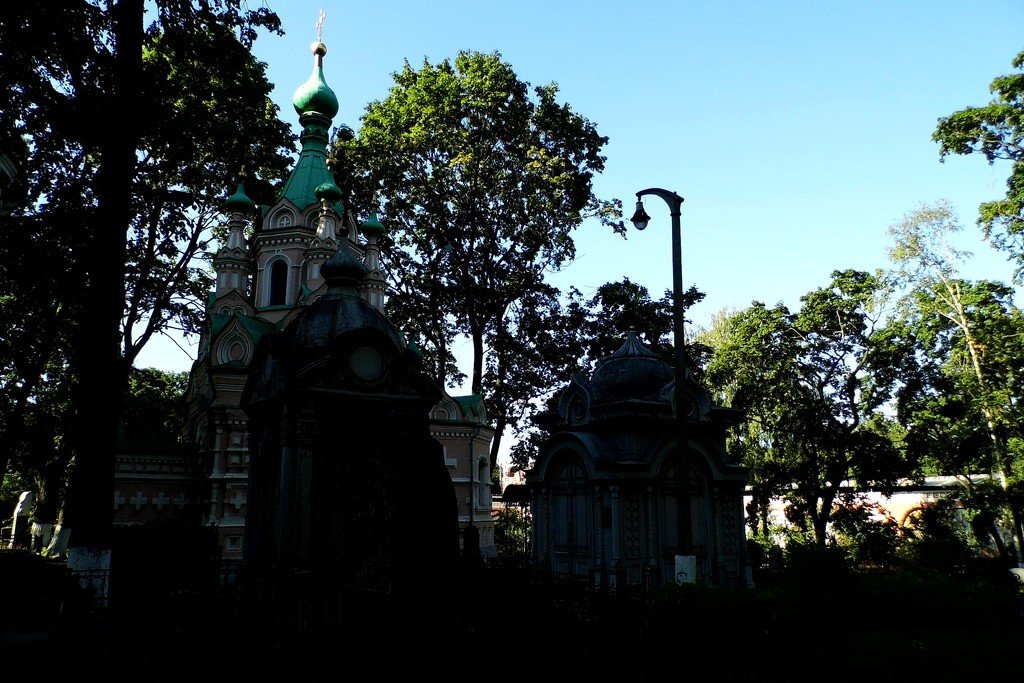
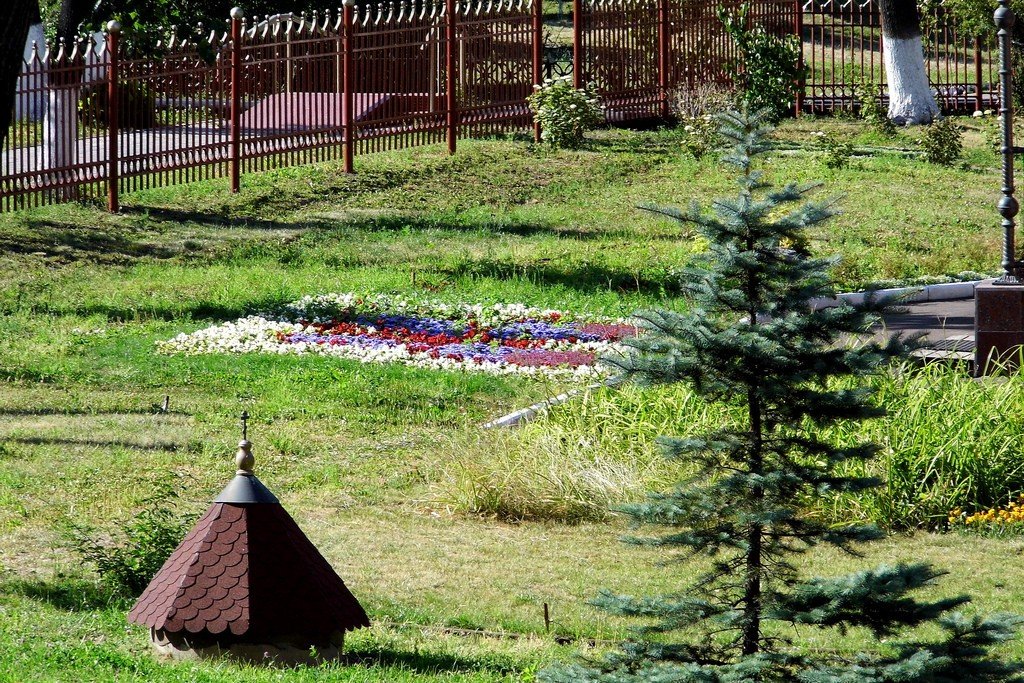
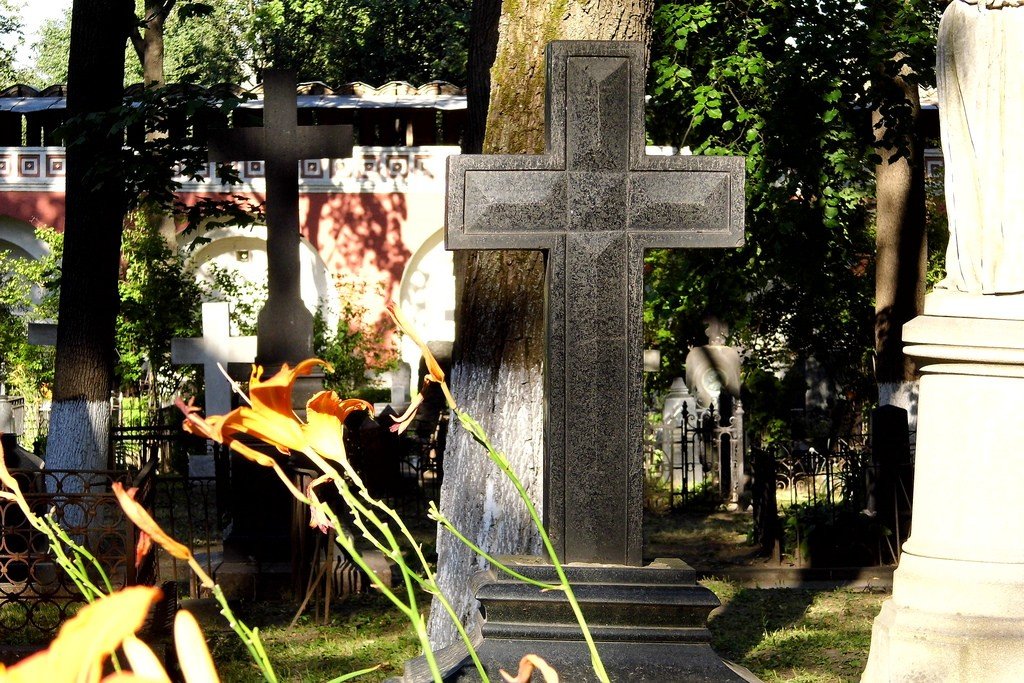
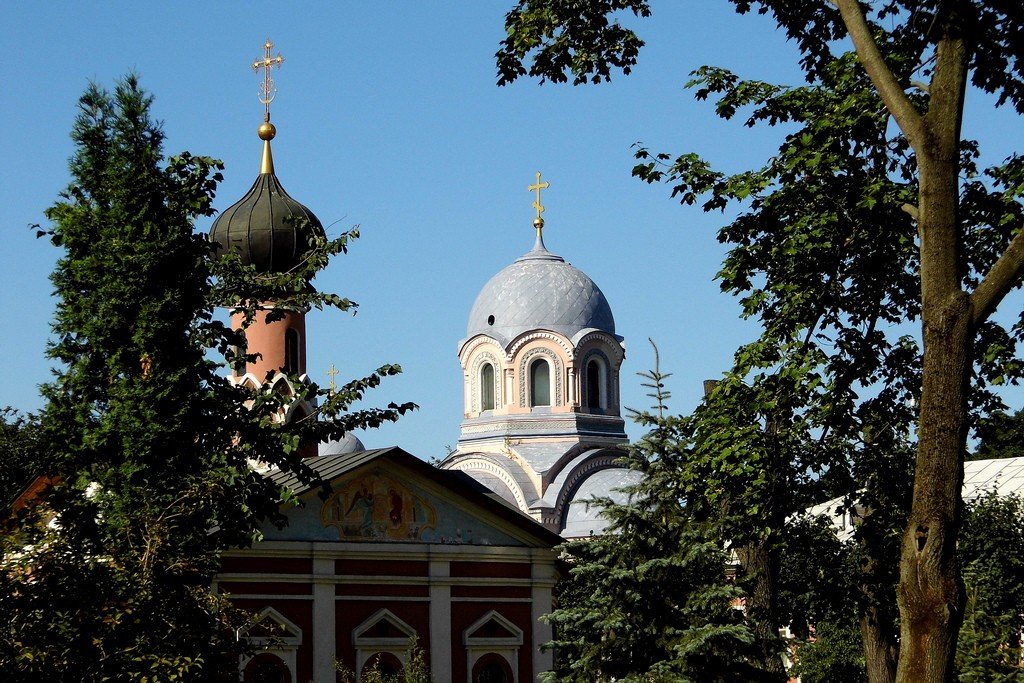
Video: Donskoy Monastery
History of the Donskoy Monastery
Unfortunately, no documents have survived to our time, which accurately determine the date of the foundation of the Donskoy Monastery. Chronicle evidence suggests that it was 1591, when the Russian troops defeated the khan Kazy-Girey. His army, practically meeting no resistance on its way, approached Moscow. At that time around the capital there was a defensive system of outposts in the form of monasteries, which were small fortresses. Only the southwestern direction remained unprotected. Here, near the village of Kotly, they deployed a mobile fortress – the so-called gulai-gorod. In its marching church at that moment kept the Don icon of the Mother of God, which, according to legend, patronized the Russian soldiers during the Kulikovo battle. And this time the Russians under the leadership of Boris Godunov managed to win, almost completely defeating the suddenly retreating army of the Khan.
.
Wishing to immortalize this event, Godunov ordered the foundation of a monastery here, named the Donskiy Monastery in honor of the icon. Initially, it was a single-domed cathedral surrounded by a log palisade. At the dawn of the XVII century the monastery was plundered by Poles led by Hetman Khodkevich and for a long time was in desolation. However, by 1700 the monastery was already finished with the reconstruction of the monastery, which was impressive in its scale. Catherine Alekseevna of the noble Miloslavsky family allocated funds to ennoble the religious monastery. The cathedral consecrated in 1698 decorated it. At the beginning of the XVIII century the territory of the Donskoy Monastery was surrounded by a wall crowned with a dozen towers. It, in turn, was erected on the money of clerk Averky Kirillov. Over time, several churches, a seminary, the archimandrite’s quarters and cells for monks were built here. The erection of objects continued until the beginning of the XX century.
.
Since 1918 the monastery was closed, but the monks continued to live in it until the late 20s. Since 1929, worship services in all churches were discontinued. Since 1934, the Museum of Architecture functioned here. During this period the surviving fragments of Moscow cathedrals and temples, which were destroyed during the anti-religious struggle, were brought to the territory of the monastery. In 1946 the services were resumed in the Small Cathedral. In the temple there appeared a furnace for cooking aromatic oil – mira. In 1991, the monastery came under the aegis of the Moscow Patriarchate. A year later, the oldest cathedral of the Donskoy Monastery experienced a great fire – the result of treacherous arson. During restoration work, the burial place of Patriarch Tikhon was discovered. Now his relics rest in the Main Church of the monastery.
.Architecture
The Donskoy Monastery is a majestic architectural ensemble in the center of the capital. Surrounding it is a powerful patterned wall with hinged loopholes in its upper part, four corner and eight frontal towers make the monastery look like an ancient Russian fortress. All the large buildings of the monastery, not counting the oldest of them – the Small Cathedral, were built in a short half-century period starting from 1686, when the construction of the Main Temple was started. Perhaps for this reason, the whole architectural ensemble traces a common design.
The walls of the Donskoy Monastery form a regular square, in the center of which is located the Great Cathedral, which emphasizes the desire for regularity and order. There is a unity of style in which the main buildings are built, as well as the facade orientation of the monastery in relation to the main roads leading to it – from the north and west sides.
.
The Great Cathedral
In the very center of the Donskoy Monastery is located its main architectural structure – the Great Cathedral, which is one of the first attempts to build a cross-shaped building. Its construction began in the mid-1880s of the 17th century during the reign of Sophia Alexeevna and was completed in 1698 after a six-year break.
The last decades of the XVII century were marked in Russia by changes in architectural orientation: the asceticism characteristic of church buildings gave way to a resemblance to opulent palaces. This also affected the Great Cathedral, which was a centric temple, resembling a blossoming flower in its layout. This solution allowed to create a majestic interior, illuminated by four light “drums”. Especially beautiful is the carved iconostasis, which has eight tiers, the lower ones of which were made by the gold painter Karp Zolotaryov. The interior decoration of the cathedral striking with its grandiosity seems to be flooded with streams of light. Not every architectural construction could boast of this.
.The base of the cathedral is formed by the basement, surrounded by an arched two-tiered gallery. Initially the tiers were open, but over time the arches of the lower one were laid, and the upper one was glazed. The front entrance to the temple is located on the northern side: when the cathedral was built, the road from the city to the Donskoy Monastery approached from the north, where, in fact, the main gate was located. Many secrets are kept in the Great Cathedral, and some of them are connected with the burials in the basement. Currently there is a very interesting exhibition here, exhibits of which are various tombstones decorated with flowers, family coats of arms and skulls.
.
For many centuries, the cathedral has kept within its walls the miracle-working Donskoy icon of the Mother of God. There are two such icons. One of them was painted by Theophanes the Greek in the XIV century. According to legend, it was given to Dmitry Donskoy before the Battle of Kulikovo. This icon was kept in the Annunciation Cathedral of the Kremlin, and only once a year it was brought to the main church of the monastery for a solemn service on the day of the celebration of the Don Icon of the Mother of God. The tradition has survived to our days, and every year on September 1 the icon is delivered by special transport from the Tretyakov Gallery. The second of the existing icons was painted by order of Boris Godunov in the 16th century and was intended for the cathedral of the Donskiy Monastery, where it is permanently located.
.Small Cathedral
The oldest building of the Donskoy Monastery is its Small Cathedral, also called the Old Cathedral. Erected in the era of Boris Godunov, it is a pillarless one-domed temple with a baptized vault and a three-tiered mountain of kokoshniks. In Russian architecture of the XVI century it is the only representative of such monastery cathedrals. In 1679 a hipped bell tower was added to it. Appearing in Russia in the early 16th century, this type of temple architecture is not found in any other country in the world.
.
The old cathedral throughout its existence was almost always active. In its refectory there was a large cauldron in which the myrrh, a consecrated aromatic oil, was brewed. In 1930 the church was closed. Divine services and myrrh brewing were resumed only two decades later. In the furnace and to this day once a year on Holy Week of Lent, fragrant oil is cooked, the aroma of which is spread throughout the monastery.
.
In 1992, the refectory was almost completely burned out in a fire. Later the interior was restored and its walls were painted again, for which the artist A. S. Rossal-Voronov received from the Patriarch the medal of St. Sergius of Radonezh.
.The Small Cathedral is the repository of a number of relics. Among them are the Donskoi Icon of the Mother of God, a casket with the relics of Patriarch Tikhon, the icons of the “Sign” and Our Lady of Fyodorov. Currently, restoration work is being carried out here, the goals of which are to install a new iconostasis, gild the domes and move the oven for the preparation of peace to the Church of St. John Chrysostom.
.Churches
In the first half of the 18th century, after the wall around the Donskoy monastery was erected, three more churches were built. One of them was the Church of Archangel Michael, built in 1714 and located in the southern part of the courtyard. A hundred years later it was rebuilt, and the church became a burial vault for the Golitsyn family. The interior was also a kind of exhibition hall of samples of memorial sculpture.
.
The Holy (Northern) Gate – the main entrance – served as a base (sub-cell) for the tiers of the Tikhvin Church, which was built simultaneously with the Church of Archangel Michael. The funds for its construction were allocated by Tsarina Praskovya Feodorovna. Since many of its architectural elements of the temple resembles the Church of Archangel Gabriel, designed by Ivan Zarudny, the same architect is attributed the authorship of the Tikhvin Church. The temple has three tiers, the top of which is a belfry with bells. On the north side of the area around the porch is fenced with a lattice, forged in the early 18th century.
.
A classic compositional technique of that era – the placement of octagonal tiers on a tetrahedral base (quatrefoil) – was used in the construction in 1730-1753 years of the gate bell tower of the Donskoy Monastery. At the time of its erection, it was one of the tallest buildings in Moscow’s neighborhood, reaching into the sky above the western entrance gate. The authorship of the project is attributed to the architect A. Yevlashev. The lower tier of the structure is occupied by the church of the holy righteous Zacharias and Elizabeth. The bell tower had more strict and “heavy” forms in comparison with the Tikhvin church and surpassed it in height. The belfry housed ten bells, the largest of which had a mass of eleven tons. There is also a bell weighing three tons, which in 1730 Empress Anna Ioannovna presented to the Don Monastery. It was originally intended for St. Isaac’s Cathedral in St. Petersburg.
.Over time, the western gate, considered secondary, became the main entrance to the territory of the monastery. The walls of the arched passage are decorated with icons depicting saints and scenes from their lives. Occupying an intermediate place among the three tallest buildings of the monastery, the bell tower visually softens the contrast between the volume of the Great Cathedral and the graceful weightless appearance of the church of the Tikhvin Icon of the Mother of God.
.In addition, the territory of the Donskoy Monastery “sheltered” small chapels and churches built in the XVIII-XIX centuries. Some of them were erected as burial vaults. At the beginning of the XXI century resumed the construction of small churches. In 2000 appeared the Church of St. George the Victorious – a symbol of the two-thousandth anniversary of the Nativity of Christ and the decade of the transfer of the Donskoy monastery to the Moscow Patriarchate. In the same year they also erected a church in honor of Patriarch Tikhon of All Russia.
.Monastery necropolis
In those days, a cemetery was laid out near every Russian monastery. Usually the graves of abbots and simple monks were the first to appear. Although the Donskoy monastery existed since the end of the XVI century, on its territory you can see tombstones installed only at the beginning of the XVIII century and later. This is probably due to the fact that until the middle of the XVII century the monastery was not distinguished by luxury and wealth, and its abbots may have been buried in the territory of the cemetery of St. Andrew’s Monastery, to which the Donskoy Monastery belonged.
.
Another version is related to the fact that as smaller monasteries began to be assigned to the monastery, its prosperity grew and it became quite a wealthy household, owning large tracts of land and many serfs. Necropolis of the Donskoy monastery gradually turned into a place where famous people, aristocrats and simply wealthy citizens found their final resting place. The land in the cemetery became the subject of various speculations. Wishing to make money on the sale of “new” burial plots, practical monks could destroy old abandoned graves. This became especially important during the plague epidemic, when Empress Catherine II forbade burying the dead on the territory of the monastery by her decree. An exception was made only for high-ranking citizens, whose relatives had to shell out a lot of money.
.
On the territory of the necropolis you can wander for more than one hour, looking at the monuments. Many of them were not spared by time and weather. Sometimes it is difficult to make out the inscriptions on the darkened tombstones. There are almost no traditional crosses in the cemetery, but you can see various urns, vases, slabs and mourners. There are monuments made in the form of columns and even pyramids. Some of the family tombs are small, sometimes strikingly beautiful chapels. One can see the count burial places of the Tolstoys, Zubovs, Panins. Princes Dolgorukovs, Volkonsky and Golitsyns, as well as numerous representatives of noble families: Khvoshchinskys, Protasovs, Naryshkins found their last refuge in the monastery. Relatives of the famous poet Alexander Pushkin are buried in the cemetery – two aunts, a grandmother and an uncle. The remains of Generals Denikin and Kappel, painter Vasily Perov, writer Alexander Solzhenitsyn were transferred here. During a walk through the necropolis you do not get that depressing feeling that usually accompanies a visit to such places. Walking in the shade of numerous trees, people indulge in thoughts about the essence of existence.
.
At the eastern wall you can admire the stunningly beautiful high reliefs from the Cathedral of Christ the Savior. These masterpieces of wall sculpture on biblical themes were saved before they were blown up in 1931. Near each of them hangs a plaque with the name. The grandest of the high reliefs depicts a visit to St. Sergius of Radonezh by Dmitry Donskoy on the eve of his campaign against the army of the Golden Horde.
.How to get there
Using the subway, you can get to the nearest station to the Donskoy Monastery – “Shabolovskaya” (on the Kaluzhsko-Rizhskaya line). After leaving the subway and turning right on Shabolovka Street, walk along it to the 1st Donskoy Proyezd. Turning into it, you will reach the corner tower of the monastery. From here, follow the alley along the wall, passing the northern gate with the Tikhvin Church and rounding another corner, tourists get to the main entrance to the monastery – the Western Gate. The length of the route is about 1.2 kilometers.
.If you plan to reach the monastery by car, you should remember the address: Donskaya Square, 1-3. The abode is open to the public daily from 9:30 to 18:00, and on church holidays – until 20:00.
.